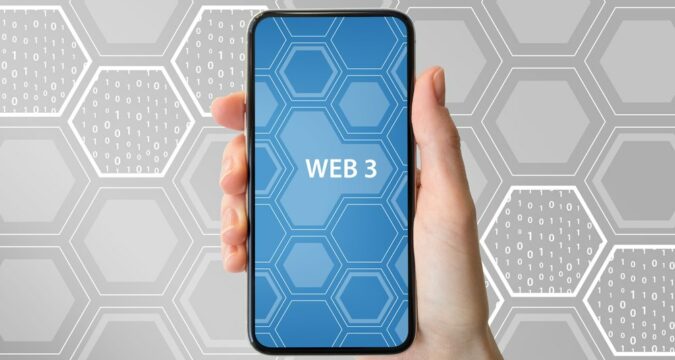
Introduction
Internet protocols allow users to connect to different domains and servers across the net. However, the end users do not view the code and program that work in the background. Instead, the majority of internet users interact with a user interface that is made of documents and sites that are either static or dynamic.
These connected pages can be accessed from any part of the world and thus they are known as World Wide Web. In simple words, World Wide Web refers to all the sites and public domains which computers and devices can access on the Internet.
Evolution of Web
Websites on the internet started with a basic format that offered limited functionality for the creators and the users. However, over time, the web started to evolve and it has kept upgrading to date. Depending on the user experience the web can be divided into three evolutionary stages:
Web 1.0
It is the starting point for all websites. This type of web was created using the basic syntax of HTML. It meant that developers were able to add various styles and formatting options for their content.
However, these websites were almost always static and non-interactive. Companies used web pages to display their online content in read-only format.
Key Features of Web 1.0
Web 1 was fully decentralized because anyone was able to host a server, create new apps, and post information on the internet.
There was little precedence for regulations or rules by search engines concerning the indexing and designing of these websites.
There were little to no censorship guidelines for the material posted on Web 1.0 sites. These sites were accessible for users via web browsing programs such as Netscape and internet explorer.
Web 2.0
Web 2.0 marks the beginning of a centralized internet. Big tech companies started to host massive data servers that stored their interactive sites and user data. With the introduction of social media websites in the 90s, web 2.0 underwent a boom.
At the same time, when websites allowed end users to interact e-commerce sector progressed rapidly. At the same time, a rapid increase in the number of writers, SEO experts, digital marketers, social media managers, and influencers was noticed.
Key Features of Web 2.0
Web 2.0 was the next step in the evolution of websites where end users were able to add comments, create personalized accounts, and store data and information.
Web 2.0 enabled users to interact with each other and the companies that they were dealing with. Allowing e-commerce sites like Amazon, Alibaba, and eBay to grow exponentially.
Web 2.0 made room for social media sites like Facebook, Twitter, Tumbler, Pinterest, etc.
Pros of Web 2.0
- Interactive websites have greater utility
- The boom of digital marketing and e-commerce
- Creation of new online jobs and development of a digital economy
- Faster sharing of information
- Rise of smartphones and mobile applications
Cons of Web 2.0
- Centralized control over the internet
- SEO competition
- Tech monopolies
Web 3.0
Web 3.0 is the next step evolutionary state of the internet that aims to promote Peer-to-peer interactive models. Web 3 can leverage technologies such as Virtual reality, the Internet of Things, open-sourced programs, and blockchain. Web 3 is going to retain all the interactive capabilities and utility of Web 2.0 and bring more decentralized and personalized control for the users.
Key Features of Web 3.0
Web 3.0 aims to be decentralized where users will not be able to own a digital land or server where they practice full control. It means a shift from the centralized sites that are under the control of private tech enterprises. Therefore, it also offers considerable potential for the growth of the crypto sector.
Web 3.0 plans to be a permissionless channel that does not require approval from a centralized entity meaning that everyone is allowed to participate.
Web 3.0 has mechanisms to verify itself such as blockchain checks correct transaction records, which makes it a trustless forum.
Pros of Web 3.0
- Since Web 3.0 decreases the dependency on centralized servers therefore hackers will have to make a greater effort for a breach. Thus, web 3.0 becomes safer in terms of data security.
- Web 3.0 grants true ownership of data for the users such that they are not dependent on the rules and themes that are assigned by centralized websites.
- Web 3.0 will have lesser censorship implications. Each user can have control over the level of censorship and rules they wish to set.
- Web 3.0 can pave the way for greater financial autonomy on account of its compatibility with blockchain and DeFi networks.
- Web 3.0 may elevate social interactions through highly customized individual social spaces through VR and AI integration that can extend to virtual workplaces, gaming, and other social interactions.
Cons of Web 3.0
- Web 3.0 is naturally more complex to program and create in comparison to Web 2.0 applications.
- There is regulatory uncertainty surrounding Web 3.0 sites and their legal definition.
- There is a need for upgraded technology requirements for web 3.0 connectivity such as VR headsets, bigger storage, faster internet, and better processing speed.
- Web 3.0 is not interoperable with Web 2.0 sites.
Conclusion
Web 3.0 is the logical step in the transformation of the internet and the World Wide Web. There is a lot of work to be done before Web 3.0 becomes a commonplace technology.
At the same time, experts are also researching and creating awareness about the social, economic, financial, and political impact of the arrival of Web 3.0.




